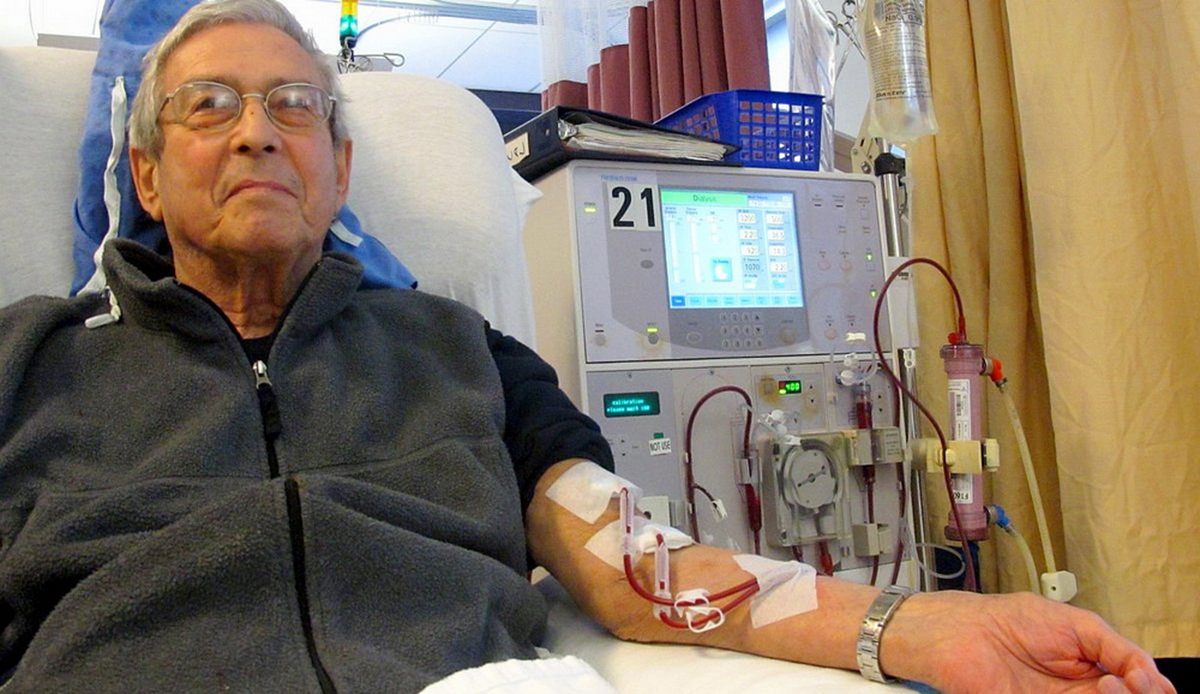Chronic Kidney Disease is a defined as a progressive loss of renal function within months to years. It is differentiated from acute kidney disease which develops within hours, days or weeks. Additionally, compared to chronic kidney disease, acute kidney disease generally resolves when the triggering effects or stimuli are withdrawn.

In the majority of times, it develops as sequelae from a previous chronic disease. In that sense, chronic kidney disease is just a complication of another disease. Dealing with chronic kidney disease requires lifestyle and diet modification to decrease the workload of the kidneys, as well as other medical procedures to carry out the function of the newly incompetent kidneys.
Causes of Chronic Kidney Disease
Although chronic kidney disease can stem from different causes, the most common are Diabetic nephropathy and Hypertensive nephropathy. These are complications of diabetes and hypertension which affect the renal system.
Diabetes and Hypertension are two of the most prevalent chronic diseases worldwide, affecting all races and all ethnic groups. When left uncontrolled or poorly controlled, they can evolve into a myriad of complications ranging from microvascular to macro-vascular sequelae. Chronic kidney disease is a result of microvascular damage and glomerular damage secondary to those conditions.
In addition to those two main conditions, other disease can also be held accountable for chronic kidney injury. This include glomerulonephritis (all forms), polycystic kidney disease (genetic transmission), chronic kidney stones, or even parasitic infections.
Classification of Chronic Kidney Disease
Chronic kidney disease is classified based on a physiological parameter known as the Glomerular Filtration Rate (GFR). The GFR simply indicates the rate at which the glomerulus (filtrating unit of the kidneys) filters blood per minute. Normally, the GFR is comprised between 90 – 120.
There are 5 identified stages of Chronic Kidney Disease, which indicate the progressive loss of kidney function. At stages 1, kidney function is still intact (GF =90+), and is minimally reduced at Stage 2 (GFR = 60-89). Stage 3 of Chronic Kidney Disease is marked by a moderate decrease in the GFR which can go as low as 30. At this stage, elevated blood pressure and anemia can result. Stage 4 is characterized by a GFR between 16-29, which indicates severely decreased kidney function. At the last stage of Chronic Kidney Disease (GFR <15), there is a severe loss of kidney function, and the best option to correct this is kidney transplant. But while waiting for a kidney transplant, the patient must be put on dialysis to survive.
See Also: New Procedure Deactivates Overactive Nerves In The Kidneys And May Aid Stubborn High Blood Pressure
Stage 5 Kidney Disease
Dialysis becomes the option of choice when you reach Stage 5 of chronic kidney disease. At that stage, the kidney function becomes severely decreased, less or equal to 15% of their normal function.
Because the kidneys are unable to perform their function, there is increased water and sodium retention in the blood, leading to significantly worsening hypertension. Furthermore, edema develops as water shifts into the tissues.
Other Functions Of The Kidneys And How They Are Affected By Chronic Kidney Disease
The kidneys are also responsible for hormone secretions (erythropoietin commonly known as EPO and Vitamin D precursor. In Stage 5 kidney disease, the kidneys lose that function as well, and this results in anemia (since erythropoietin stimulates the bone marrow to produce red blood cells) and osteoporosis and fractures (increased porosity of the bones and decreased mineralization since there is a lack of Vitamin D action). In addition to this, toxic waste products which are supposed to be eliminated by the kidneys (urea, excess electrolytes such as potassium, etc.) accumulate in the blood and cause complications (encephalopathy, seizures, muscle twitching, arrhythmias, etc.)

Understanding Dialysis
In its simplest form, dialysis can be defined as a medical process of removing excess water and waste from the blood. In other words, a dialysis procedure serves to fulfill the role of the kidneys when the latter fail. There are two main types of dialysis: hemodialysis and peritoneal dialysis.
In hemodialysis, the filtration and cleansing process is performed by a dialysis machine. During hemodialysis, the dialyzer is connected to both a vein and an artery. The blood exists the body through the arterial port of the dialyzer, enters the machine and after having been filtered, returns to the body through the venous port.
In peritoneal dialysis, the cleansing and filtration processes are performed via the peritoneal membrane of the abdomen. The peritoneal membrane is a layer of tissue that is made of all the blood vessels that line the abdominal organs (intestines, liver, spleen, etc.). An opening is created in the middle of the abdomen, and a solution containing glucose (called the dialysate) is pushed in the peritoneal cavity. Through the process of osmosis, the waste products are driven from the abdominal organs and vessels to the dialysate solution and emptied in a bag connected outside of the abdominal cavity. Once the bag is filled, it can be removed and changed with a fresh dialysate. This procedure can be repeated 4-5 times a day, and offers the advantage that it can be performed at the patient’s home without any need to move to the hospital or dialysis facility.
See Also: Kidneys Are The Hardest Workers In Your Body
When Does Dialysis Become Necessary?
Dialysis becomes an indication when the patient is diagnosed as having Stage 5 Chronic Kidney Disease. It is also indicated for patients with chronic kidney disease who is experiencing life-threatening complications such as: arrhythmias, seizures, uremic encephalopathy, and pulmonary edema. Dialysis is also used as a temporary measure while waiting for renal transplantation. However, some patients end up going through dialysis for the rest of their life due to the inaccessibility of renal transplantation (donors, fees, etc.) The most common complication of renal dialysis is infections due to catheter use. When a fistula is used, the most common complication is lack of fistula patency.
- Photo by shutterstock.com
- Photo courtesy of Anna Frodesiak by Wikimedia Commons : en.wikipedia.org/wiki/Dialysis#mediaviewer/File:Patient_receiving_dialysis_03.jpg
- http://en.wikipedia.org/wiki/Dialysis#Peritoneal_dialysis
- http://www.renal.org/information-resources/the-uk-eckd-guide/ckd-stages#sthash.GBD1np4a.dpbs
- en.wikipedia.org/wiki/Chronic_kidney_disease#Causes
- www.uptodate.com/contents/indications-for-initiation-of-dialysis-in-chronic-kidney-disease

